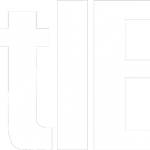From Isaac Ehrlich and Yong Yin (NBER, 2012):
Self-insurance is intrinsically a substitute for market insurance whereas self-protection could in principle be a substitute or a complement, depending on whether insurance companies monitor individual efforts at self-protection and reward such behaviors with lower premiums – a rather unlikely prospect in the case of typical, menu-based health insurance policies where premiums are based on overall community rating. As we show, [] both alternatives, when sufficiently effective, increase the likelihood of a “corner solution” in which the purchase of insurance is eschewed altogether. This possibility [] has been entirely missing from the debate about the rationale for mandating uniform health coverage, as well as from the micro-simulation models offered by the CBO and Rand’s COMPARE, which project the take-up rate of the Patient Protection and Affordable Care Act (ACA) and assess some of its welfare implications. […]
Our calibrated simulations [] indicate that self-insurance and self-protection account for 31.3% of the uninsured by the baseline model, or 28.2% by the extended model. Jointly with the safety net system, these alternatives account for 50.3% and 45.5% of the uninsured, respectively. […]
As our analysis [] illustrates, estimates of compliance rates with the mandated provision of the ACA of by the previously uninsured could be significantly overstated if no account is given to the role that [self-insurance/self-protection] and the safety net have played in motivating the original decision of individuals to be uninsured. The precise estimates depend on the magnitude of the penalty actually imposed on non-compliers, but our illustrated results indicate that it might be significantly overstated, perhaps by over 50%.


